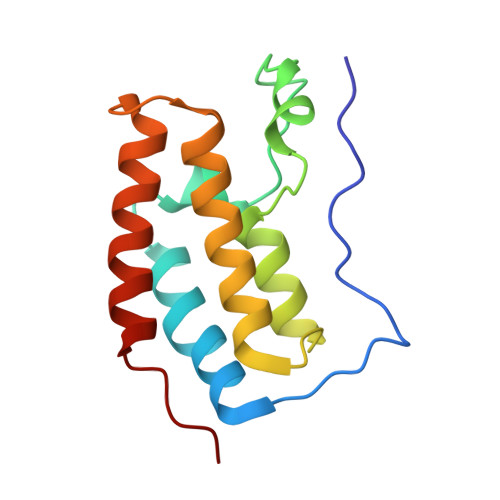RVX-208, an inhibitor of BET transcriptional regulators with selectivity for the second bromodomain.
Picaud, S., Wells, C., Felletar, I., Brotherton, D., Martin, S., Savitsky, P., Diez-Dacal, B., Philpott, M., Bountra, C., Lingard, H., Fedorov, O., Muller, S., Brennan, P.E., Knapp, S., Filippakopoulos, P.(2013) Proc Natl Acad Sci U S A 110: 19754-19759
- PubMed: 24248379
- DOI: https://doi.org/10.1073/pnas.1310658110
- Primary Citation of Related Structures:
4MR3, 4MR4, 4MR5, 4MR6 - PubMed Abstract:
Bromodomains have emerged as attractive candidates for the development of inhibitors targeting gene transcription. Inhibitors of the bromo and extraterminal (BET) family recently showed promising activity in diverse disease models. However, the pleiotropic nature of BET proteins regulating tissue-specific transcription has raised safety concerns and suggested that attempts should be made for domain-specific targeting. Here, we report that RVX-208, a compound currently in phase II clinical trials, is a BET bromodomain inhibitor specific for second bromodomains (BD2s). Cocrystal structures revealed binding modes of RVX-208 and its synthetic precursor, and fluorescent recovery after photobleaching demonstrated that RVX-208 displaces BET proteins from chromatin. However, gene-expression data showed that BD2 inhibition only modestly affects BET-dependent gene transcription. Our data demonstrate the feasibility of specific targeting within the BET family resulting in different transcriptional outcomes and highlight the importance of BD1 in transcriptional regulation.
Organizational Affiliation:
Structural Genomics Consortium, Nuffield Department of Clinical Medicine, University of Oxford, Oxford OX3 7DQ, United Kingdom.
















